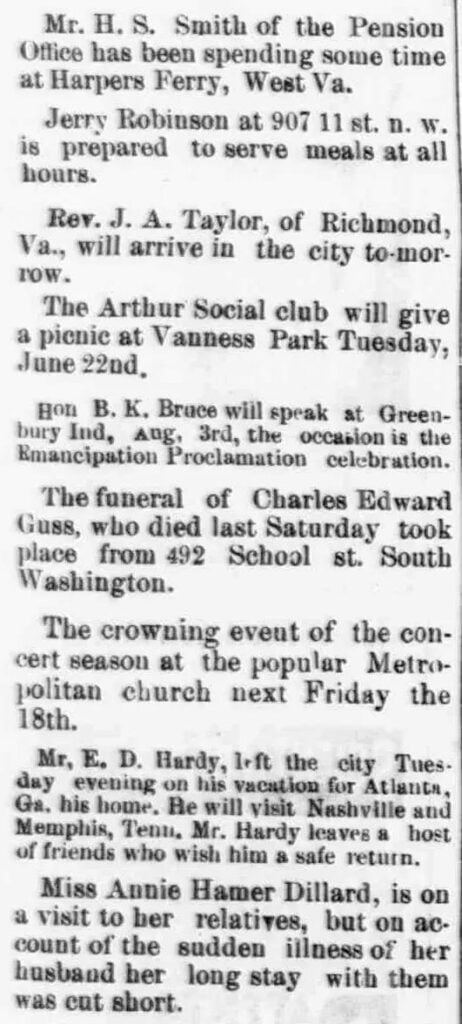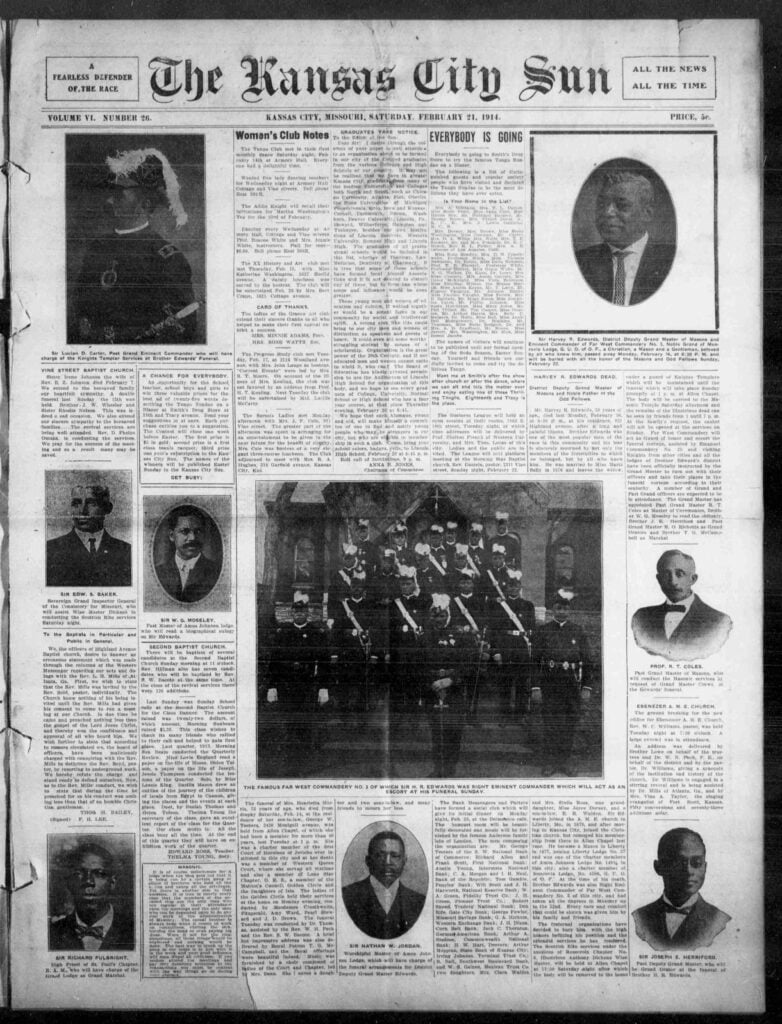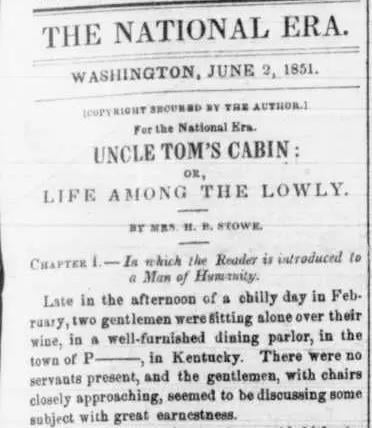February is Black History Month, a time to reflect and celebrate the contributions and achievements of African Americans throughout history. In the realm of genealogy and family history research, African American newspapers stand as a particularly valuable resource. These newspapers not only offer a unique perspective on the lives and experiences of African Americans but also serve as a crucial tool for those tracing their African American heritage.
Unearthing Hidden Stories
African American newspapers have been in publication since the early 19th century. They served as crucial channels to spread news, commentary, and community information among African American communities. Major African American-owned papers were founded in Northern cities as African Americans migrated from the rural South in the Great Migration, seeking new economic opportunities. These papers not only reported major national events, but also contained local stories, church announcements, business listings, wedding announcements, obituaries, and other details that are tremendously helpful for piecing together family lineages.
A Treasure Trove for Genealogists

For genealogists, African American newspapers are a goldmine. They contain a wealth of information that may not be found in traditional sources like census records or birth certificates, especially during times when official records for African Americans were poorly kept or nonexistent. Here’s what they offer:
- Obituaries and Marriage Announcements: These sections can provide names, dates, and locations, crucial for building a family tree.
- Community News and Events: Details about social events, church gatherings, and community organizations can offer insights into the lives of ancestors and their social networks.
- Advertisements: Local business ads can reveal information about the economic activities and entrepreneurship within the African American community.
- Legal Notices: Information about land transactions, estate settlements, or court proceedings can be found, shedding light on the legal challenges faced by ancestors.
- Editorials and Letters: These sections reflect the opinions and voices of the community, offering a deeper understanding of the societal context in which ancestors lived.
Accessing African American Newspapers
Many African American newspapers have been digitized and are accessible online through platforms like NewspaperArchive.com. Libraries and historical societies also often have collections of these newspapers. It’s important to approach this research with a sense of exploration, as the journey through these pages is not only about finding names and dates but also about understanding the rich cultural and historical context of African American life.
The African American Collection at NewspaperArchive
Step back in time and immerse yourself in the world of iconic figures like Harriet Tubman and Frederick Douglass with NewspaperArchive’s expansive collection of over 100 historical African American publications.
A few of the publications from the collection include:
The Afro-American – The Afro-American was founded in Baltimore in 1892 by John H. Murphy Sr. He started the paper to serve Baltimore’s African American community. It eventually became one of the longest running African American newspapers in the country. The Murphy family owned and published the paper for over 120 years across four generations, making it one of the oldest family-owned newspapers nationwide.
The Washington Bee – Founded in 1882 by newspaperman William Calvin Chase, The Washington Bee was the longest running African American newspaper during the 19th century. Published weekly out of Washington D.C., The Bee provided extensive coverage of national political news and attention to the activities of the city’s African American community and local churches.

The Broad Ax – The Broad Ax began publication in Salt Lake City, Utah, in 1895, and later moved to Chicago, Illinois. It was founded by Julius F. Taylor, a prominent African American publisher. He often used the platform to challenge racial discrimination and promote social and political reforms beneficial to the African American community.
The Call and Post – The Call and Post is a historically significant African American newspaper established in Cleveland, Ohio. It was founded in 1916 as The Call and later merged with The Post in 1929, leading to its name, The Call and Post. The newspaper was an essential voice for the African-American community, providing coverage on local, national, and international news, with a particular focus on issues affecting African Americans.
The Kansas City Sun – The Kansas City Sun, established in 1908 in Kansas City, Missouri, was an influential African American weekly newspaper. It was founded by Chester A. Franklin, a prominent figure in the African American press. The newspaper played a critical role in addressing the social, political, and economic issues facing the African American community in the early 20th century.
Other publication ideas:
Abolitionist newspapers are valuable resources in family research, especially for those tracing African American ancestry. These publications often contained detailed accounts, editorials, and personal stories related to the abolitionist movement, offering insights into the lives and experiences of both enslaved and free African Americans. They frequently listed names, locations, and other personal details in articles about slavery, escape attempts, and the activities of abolitionist societies. For families researching ancestors who were involved in or affected by the abolition movement, these newspapers provide a wealth of information that may not be available in other records. Additionally, they offer a broader historical context, helping family researchers understand the social and political environments in which their ancestors lived. This can be particularly crucial for piecing together family histories disrupted by slavery and migration, making abolitionist newspapers a critical tool in the exploration and preservation of family legacies.

The National Era – The National Era was an abolitionist newspaper published weekly from 1847 to 1860. Founded by prominent abolitionists and financiers, it aimed to further the anti-slavery cause leading up to the Civil War. Published in Washington to directly influence national political debate, it was edited by abolitionist Gamaliel Bailey. One of its first major contributions was publishing forty installments of Harriet Beecher Stowe’s novel Uncle Tom’s Cabin over ten months from 1851-1852.
The Philanthropist – The Philanthropist was a notable abolitionist newspaper published in Cincinnati, Ohio, starting in 1836. It was established by the Ohio Anti-Slavery Society and edited by James G. Birney, a prominent abolitionist. The newspaper played a critical role in the anti-slavery movement in the pre-Civil War United States.
Tips for Genealogy Research
- Search names, locations, churches, businesses, social groups, and more that might be associated with your ancestors. Creative searching can uncover obituaries, wedding announcements, church events, and more.
- Find the newspapers published in the cities or towns where your ancestors lived.
- Search ±5 years of birth, marriage, and death dates for family notices. An obituary might be published months or years following a death.
- Examine the social pages for listings of family gatherings, parties, meetings, and visiting relatives. This can provide connections between families.
- Pay attention to ads and business listings for family businesses, especially during the early 20th century when segregation limited economic opportunities.
Final Thoughts
During Black History Month, as we honor the past and the journey of African Americans, utilizing African American newspapers for family history research is not only a tribute to our ancestors but also a reclamation of history. These newspapers offer a window into the lives of those who may not have been recorded in mainstream history, allowing their stories and legacies to be heard and preserved for generations to come.
In the spirit of this month, let’s delve into these newspaper archives and uncover the stories that form the tapestry of African American history and heritage. Remember, each name, each story uncovered, contributes to a greater understanding and appreciation of the rich and diverse history of our ancestors.